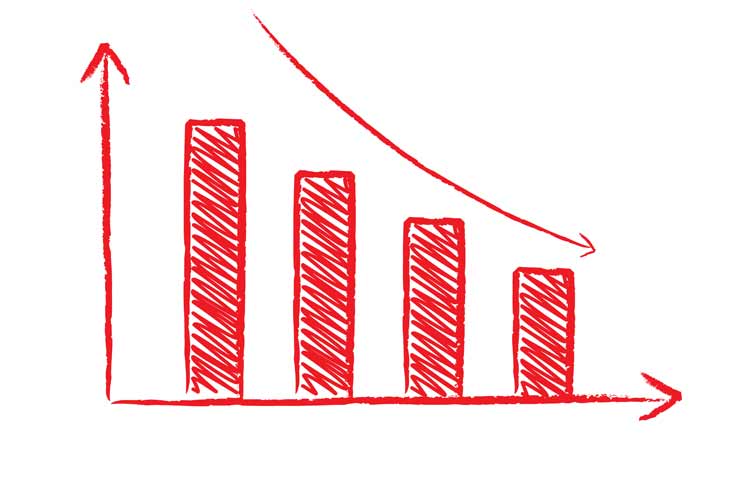
A closer look at how the Dow has historically performed following seven-day losing streaks
The
Dow Jones Industrial Average (DJIA) is easily on track for its
seventh consecutive loss, down triple digits
once again. Therefore, we decided to take a look at how the blue-chip bellwether tends to perform following similar losing streaks.
Immediately below, you'll find a table that spells out how the Dow has performed after its last 20 seven-day losing streaks, which takes us back to 1973. Under it is another table that displays the index's anytime returns within the same time frame. The data comes courtesy of Schaeffer's Senior Quantitative Analyst Rocky White. As you can see, the Dow tends to underperform in the short term, averaging a single-week post-signal loss of 0.3%, compared to an anytime single-week gain of 0.2%. When you get out to two weeks and one month, however, the Dow historically outperforms in the wake of a signal, averaging gains of 0.8% and 0.9%, respectively, compared to anytime advances of 0.3% and 0.7%.

One other thing you may notice in the tables above is that, despite the stronger-than-average two-week and one-month performances after the signal, the percent positive (45% and 50%, respectively) are lower than the anytime results (57% and 59%). The reason for this is that the post-signal positive returns tend to be much higher than the negative returns, suggesting the current risk-reward set-up may favor patient bulls.
Moving along, you'll see another chart below listing the last 20 Dow seven-day losing streaks. The last time this happened was roughly four years ago, and the results were unusually negative, even going one month out -- during which the index fell 4.7%. Another interesting observation is that the current losing streak is not particularly severe, with a cumulative loss of 2.6%. Only one other losing streak (in May 1989) resulted in a smaller loss.

Finally, although the current losing streak is nothing to scoff at, history shows us that Dow losing streaks can extend much further. Dating back to 1950, there have been 19 instances in which the bellwether has posted a losing streak of at least
eight days, with the longest reaching 12 sessions, in January 1968.
